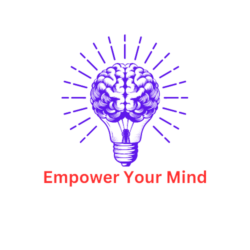
What’s the Difference Between ADHD and Autism?
Attention Deficit Hyperactivity Disorder (ADHD) and Autism Spectrum Disorder (ASD) are two common neurodevelopmental disorders that often get compared due to overlapping symptoms. However, they are distinct conditions with unique characteristics. Understanding the difference between ADHD and Autism is essential for proper diagnosis and treatment.
What Is ADHD?
ADHD is a neurodevelopmental condition that affects attention, impulse control, and hyperactivity. It’s one of the most common mental health disorders diagnosed in children, but it can also persist into adulthood. ADHD manifests in different ways, often categorized into three types: inattentive, hyperactive-impulsive, and combined.
Key Symptoms of ADHD:
- Difficulty paying attention
- Impulsivity (acting without thinking)
- Excessive physical movement or fidgeting
- Disorganization and forgetfulness
What Is Autism?
Autism, or Autism Spectrum Disorder (ASD), is a condition that impacts social communication and behavior. Autism exists on a spectrum, meaning that symptoms and their severity vary widely from one person to another. Some individuals may have significant challenges, while others may have mild symptoms and lead largely independent lives.
Key Symptoms of Autism:
- Difficulty with social interactions and communication
- Repetitive behaviors and routines
- Intense focus on specific topics or interests
- Sensory sensitivities to light, sound, or textures
How Are ADHD and Autism Different?
While ADHD and Autism can share some traits, such as trouble focusing and difficulties in social settings, there are clear differences between the two.
Social Interaction
- ADHD: People with ADHD usually want to engage socially, but their impulsiveness and distractibility can make it challenging.
- Autism: Individuals with Autism often struggle with understanding social cues and may prefer solitary activities or have difficulty initiating conversations.
Attention and Focus
- ADHD: Individuals with ADHD often struggle to focus on tasks, especially if they find them boring or repetitive.
- Autism: In contrast, people with Autism can hyper-focus on specific topics or interests, often losing track of time.
Repetitive Behaviors
- ADHD: Repetitive behaviors are not typically a hallmark of ADHD.
- Autism: Repetitive behaviors or rigid routines are common in individuals with Autism, and they may find comfort in sameness.
How Are They Diagnosed?
The diagnosis processes for ADHD and Autism are thorough and rely on behavioral assessments, developmental history, and, in some cases, standardized testing. It’s essential to receive a proper diagnosis from a healthcare professional to ensure the right treatment.
ADHD Diagnosis:
- Behavioral Observation: A healthcare provider observes the individual’s behavior over time and in different settings.
- Rating Scales: ADHD-specific scales, such as the Conners Rating Scale, help assess symptoms.
- Developmental History: A detailed history of the individual’s early behavior and development is taken into account.
Autism Diagnosis:
- Developmental Screening: Early developmental milestones are closely monitored to detect delays in communication and social skills.
- Comprehensive Evaluation: Autism diagnosis often involves a team of specialists who conduct interviews, observe behavior, and use diagnostic tools like the Autism Diagnostic Observation Schedule (ADOS).
- Observation: Multiple observations in different settings help identify the presence of repetitive behaviors and social communication challenges.
Is There Treatment for ADHD and Autism?
Both ADHD and Autism have treatments, though they differ based on the symptoms and needs of the individual.
ADHD Treatment:
- Medication: Stimulants such as Ritalin and Adderall are commonly prescribed to help with focus and impulse control.
- Behavioral Therapy: Cognitive-behavioral therapy (CBT) and other interventions can teach individuals how to manage symptoms.
- Lifestyle Changes: Implementing routines, using organization tools, and practicing mindfulness can help manage ADHD symptoms.
Autism Treatment:
- Behavioral Therapy: Applied Behavior Analysis (ABA) is a widely used approach to help improve social skills, communication, and daily functioning.
- Speech Therapy: This can help improve communication skills for individuals who struggle with language.
- Medications: While there’s no specific medication for Autism, some medications may be used to treat co-occurring conditions like anxiety or ADHD.
Can Someone Have Both ADHD and Autism?
Yes, it is possible to have both ADHD and Autism. This is known as “comorbidity.” Studies show that up to 50% of individuals with Autism also meet the criteria for ADHD. Having both conditions can complicate the diagnostic process and the management of symptoms, but with the right support, individuals can learn to thrive.
Conclusion
While ADHD and Autism can share some overlapping symptoms, they are fundamentally different in how they affect attention, behavior, and social interactions. Proper diagnosis is crucial, as treatment strategies vary for each condition. With early diagnosis and targeted interventions, individuals with ADHD, Autism, or both can lead fulfilling lives.
